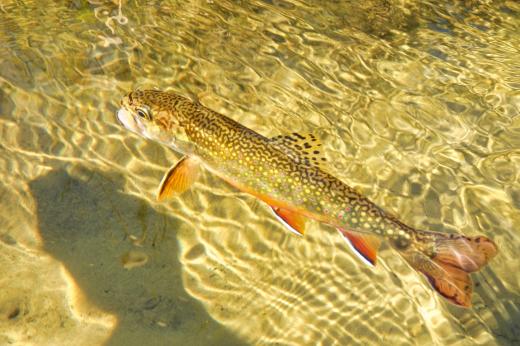Living in the Golden Age of Trout
As a trout angler, Wisconsin has been pretty good to me. Trout populations are in good shape and our State has invested heavily in public access on our trout streams. You could say, we’re living in the golden age of trout here in Wisconsin.
Our state provides a variety of opportunities for all trout anglers. Whether you’re harvesting a meal, catch and release, or hunting for a trophy, you can do it all by bait, spin, or fly in Wisconsin.
Our recently expanded seasons mean you can chase trout from January to October (even into November on a few northern rivers). Add Great Lakes tributary fishing to the mix and we’re trout fishing year round in Wisconsin!
It’s important to remember that this “golden age” is no fluke. And things haven’t always been this good. This golden age is the result of an awful lot of people rolling up their sleeves, putting on some waders, and getting to work.
Wisconsin, with its abundant water resources, is home to some of the best fisheries science in the world. Over the years, our biologists have been given the freedom to try new ideas regarding stocking, regulations, restoration, and management. We anglers get to enjoy the fruits of their labor.
Through trial and error, we learn what works best. We also learn what doesn’t work and ask why so that we don’t repeat those mistakes in the future. We are fortunate to be chasing naturally reproducing trout in our home waters instead of chasing the hatchery truck on a Saturday morning.
Much like our roads and highways have different speed limits, our trout streams need different regulations too. With such diverse size, habitat, fish population structure, and management goals, our current system of county wide base regulations with options for special regulations to meet specific goals works well.
The science behind our restoration work is evolving too. Trout Unlimited recently adopted a new strategic plan. A key component of this plan is to identify priority watersheds across the country to help focus our work on rivers home to native and wild trout that will be most resilient to climate change.
Wisconsin, in all likelihood, will end up with three or four watersheds on the priority list. These will be a regional focus point for local chapters, project managers, and our partners.
But this type of planning can also be done at the local level. I would encourage each of our local Chapters to identify home waters in your area to focus on. Pick the waters where our native fish have the best chance to thrive in the future and make a plan to see it through.
I was trying to pass an 8th Grade Algebra class the last time Wisconsin closed its trout fishing season due to the drought in the late 1980’s. Recent fishing closures in the West are a good reminder that it’s only a matter of time before we’re hit with another drought and stressed fish.
Our native brook trout, who depend on the coldest and cleanest water, will probably feel the effects of future droughts the most. It’s imperative that we do all that we can to ensure they have strongholds in the future.
This work will require a mix of advocacy, restoration work, and engagement from the TU community. Building a strong network of native and wild trout allies offers us the best chance at success.
Recent policy wins like the extension of the Knowles Nelson Stewardship Program will go a long ways towards ensuring healthy fisheries. The Stewardship program provides public fishing access and buffers the streambanks from pollutants and runoff.
Future policy issues include CAFO and high capacity well siting. And it’s past time to increase the Trout Stamp Fee to help fund future habitat restoration projects.
For us to be successful, we will need to be more than just TU members who send $35 to the national office every year. We will need to harness our unique skillset as volunteers to monitor for threats, plan restoration work, engage with partners, advocate for good public policy, fundraise, and to tell the story of our cold water fisheries.
Where will our children, our grandchildren, or our great grandchildren be trout fishing in 20 years?
I hope it’s somewhere in Wisconsin, because I know our TU community is ready to get to work. We’re going to make sure those future generations have access to cold, clean, fishable water close to home so that they too can feel like they’re fishing in the “golden age”.
Much Respect,
Mike Kuhr
State Council Chair


